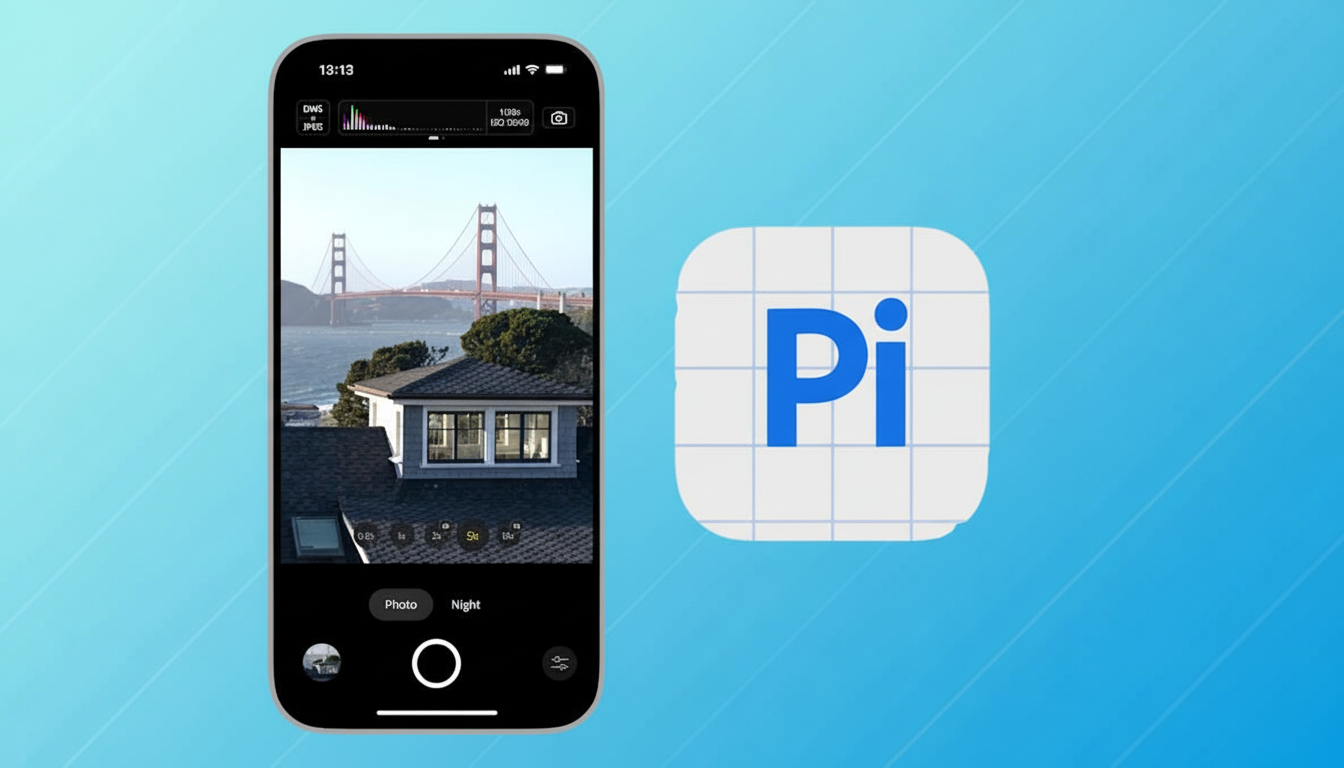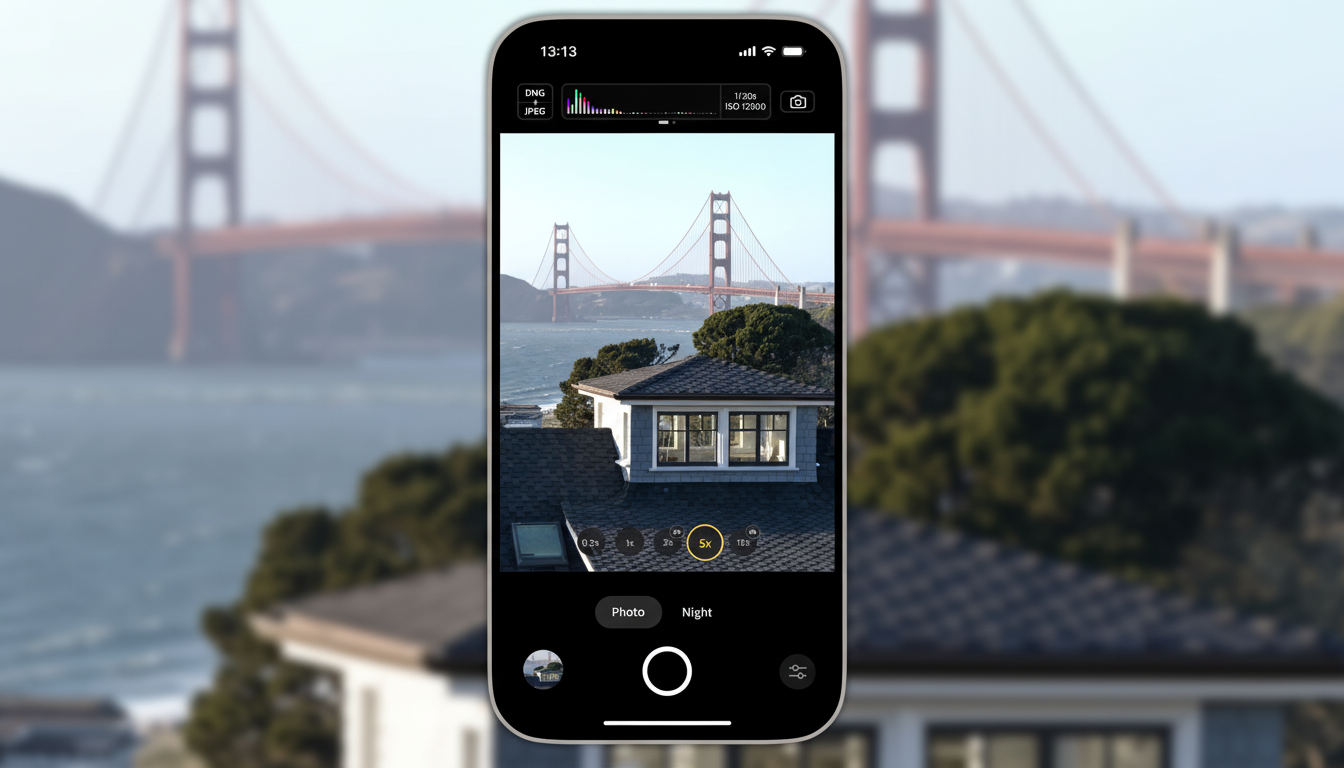Adobe’s SLR-like Project Indigo camera app now supports the iPhone 17, but there’s one major catch: It currently only works with the rear cameras. Adobe has confirmed a temporary front-camera shutdown and will be waiting for an Apple fix, so creators who were dependent on that video selfie camera need to keep holding on.
What’s new and what’s missing in the latest Indigo update
In the most recent Indigo update, iPhone 17 users can take full advantage of the app’s computational photography engine and manual controls available for focus, exposure, ISO, and shutter speed using the rear camera system.
- What’s new and what’s missing in the latest Indigo update
- Why the front camera is off limits on iPhone 17 right now
- How we got here: Project Indigo’s path to iPhone 17 support
- What photographers can do now while waiting for the fix
- The bigger picture for pro camera apps after sensor changes
- Bottom line: Indigo works on iPhone 17, selfie camera pending

Early testers say the distinct “SLR-like” look hasn’t changed, thanks to Adobe’s multi-frame processing and fine-tuned editing options.
The trade-off is up front. As The Verge reports, and as acknowledged by Adobe, Indigo’s front camera support is disabled on iPhone 17 devices. Inverting the camera in-app, you’ll be forced to make do with the rear modules until an OS-level update arrives.
Why the front camera is off limits on iPhone 17 right now
The new selfie sensor here in the iPhone 17 will be big and of a different aspect ratio than what we’re used to. In Adobe’s own words, this change caused problems in how the Indigo app interacts with Apple’s combo (camera and display) system APIs/driver code, especially concerning focus behavior and image processing pipelines.
An Adobe representative told Ars the company reported the issue to Apple, which has a fix in the works for iOS 26.1. Until then, the front camera will be disabled in Indigo to avoid unreliable results. Apple’s developer builds for iOS 26.1 are already in the wild, so it seems like a fix is imminent.
How we got here: Project Indigo’s path to iPhone 17 support
Project Indigo was unveiled earlier this year with the promise of delivering DSLR-like control to iPhone with support stretching back to iPhone 12 Pro. Although models made more recently worked as expected, the selfie hardware in iPhone 17 needed deeper changes than an app update can make, so Adobe elected to ship limited support as a stepping stone.
This strategy isn’t unlike the way that pro camera apps frequently approach big hardware transitions — focus on core shooting pipelines, let edge cases wait for platform updates. It’s less than ideal for vloggers or front-facing creators, but it keeps Indigo viable for most photo workflows.

What photographers can do now while waiting for the fix
If you’re shooting on iPhone 17, use Indigo with the rear cameras in product photography environments and landscapes as well as street work or controlled portrait setups. You’ll still have manual focus pulls, exposure control and, of course, computational rendering from Indigo that goes for a punchier SLR-like output.
If you’re a creator who frequently depends on the front camera — talking-head videos, your livestreams, selfies and what have you — well, maybe hold off on using Indigo for those until iOS 26.1 makes the scene. In the meantime, standard Camera app capture is unaffected, and existing editing apps such as Lightroom Mobile continue to process anything you import that was previously shot elsewhere.
The bigger picture for pro camera apps after sensor changes
Hardware pivots like iPhone 17’s front sensor demonstrate just how integrated pro apps are with Apple’s imaging frameworks. When a sensor’s model or metadata changes, such apps often require an OS-level change to keep feature parity — especially for manual control and computational stacks that are tuned per module.
There have been similar pauses with prior camera overhauls, and the trend tends to right itself soon after Apple ships related APIs. The Verge’s report and Adobe’s comments imply that’s precisely what we’re seeing here: a short-term restriction to maintain quality, with all the functionality lined up behind the next iOS point release.
Bottom line: Indigo works on iPhone 17, selfie camera pending
Project Indigo is now up and running on iPhone 17 — if held backwards.
If your workflow is reliant on the selfie camera, you’ll have to wait for iOS 26.1 — which Adobe says includes the remedy it needs. For everyone else, the update delivers Indigo’s SLR-like output to Apple’s latest hardware without any kind of Will It Blend-style compromise.
Adobe also stayed focused on image quality over checkbox features — a wise move for an app aimed at enthusiasts and pros. If the OS update comes through, you can expect the hole to be filled and Indigo’s complete set of tools to work again on all iPhone 17 cameras.

